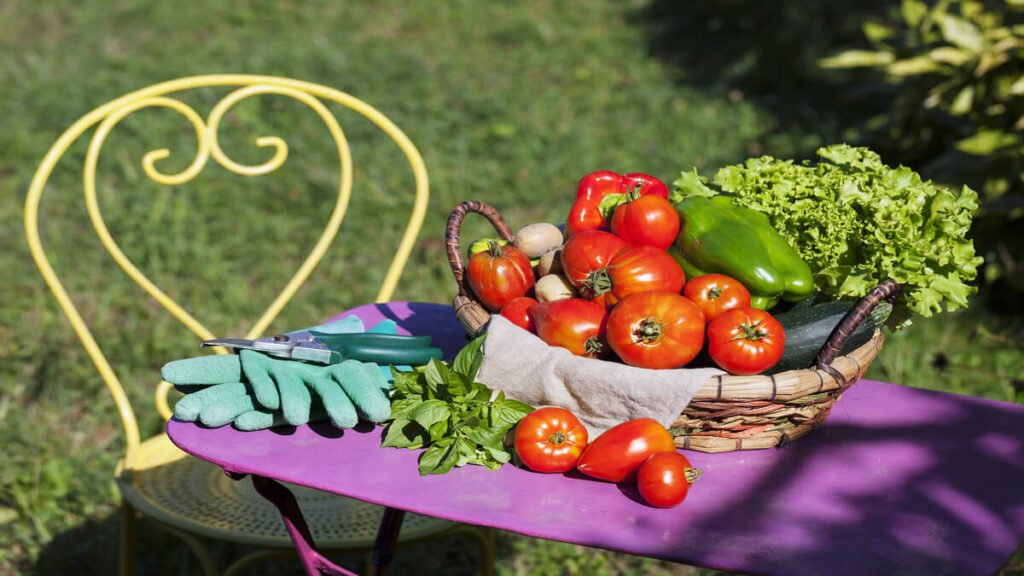With the rising cost of groceries, many people are looking for ways to save money while still enjoying fresh, healthy food. One excellent way to achieve this is by starting a small vegetable garden at home. Whether you have a big backyard, a small patio, or just a few pots, you can grow your own vegetables and significantly cut down on your grocery bill. Plus, it’s an enjoyable and sustainable hobby that the whole family can get involved in.
This article will guide you through the steps to create your own small vegetable garden at home, including what vegetables to plant, how to care for them, and how this simple activity can help reduce your grocery expenses while promoting a healthy lifestyle.
Benefits of a Small Vegetable Garden at Home
1. Save on Groceries
Growing your own vegetables can drastically reduce the cost of your grocery shopping. After the initial investment in seeds, soil, and basic tools, the ongoing cost of maintaining a small vegetable garden at home is minimal. You’ll find that growing your own food is far cheaper than buying fresh produce from the store, and with proper care, many plants can provide a consistent yield throughout the season.
2. Healthier Eating
When you grow your own vegetables, you have complete control over what goes into your garden. There are no harmful chemicals or pesticides, and you can choose to grow everything organically. This ensures that your family eats the healthiest, freshest produce straight from your garden to your table.
3. Sustainability
A small vegetable garden at home reduces your reliance on store-bought vegetables, many of which are transported over long distances, increasing carbon emissions. By growing your own food, you are helping the environment and reducing your carbon footprint.
4. Better Taste and Freshness
Homegrown vegetables often taste better than store-bought ones because they are picked at their peak ripeness. Vegetables like tomatoes, cucumbers, and leafy greens taste fresher and have a richer flavor when harvested straight from your own garden.
5. Mental and Physical Well-being
Gardening is a relaxing and rewarding activity that offers many mental and physical health benefits. Tending to your small vegetable garden at home provides light exercise, relieves stress, and gives you a sense of accomplishment as you nurture your plants and see them grow.
Related: Important Groceries To Buy With SASSA Grant Money in 2024
Steps to Starting a Small Vegetable Garden at Home
1. Choose the Right Location
The success of your garden largely depends on choosing the right spot. Most vegetables need plenty of sunlight to thrive, so pick a location that gets at least 6 hours of direct sunlight per day. If space is limited, you can use containers or raised beds to grow your vegetables.
- Sunlight: Find a sunny spot, such as a section of your yard, patio, or balcony.
- Soil: Make sure the soil is well-draining and rich in nutrients. You can improve your soil by adding compost or organic matter.
- Watering: Choose a spot that’s easy to water. Vegetables need consistent moisture, especially in the early stages of growth.
2. Decide What to Grow
When starting a small vegetable garden at home, it’s best to begin with easy-to-grow vegetables that require little maintenance. Here are some great options for beginners:
- Tomatoes: These are one of the most popular home-grown vegetables and can be grown in pots or directly in the ground.
- Lettuce and Spinach: These leafy greens grow quickly and don’t require a lot of space, making them perfect for containers.
- Carrots: Carrots do well in loose, well-drained soil and are a great choice for a home garden.
- Peppers: Sweet or hot peppers can be grown in pots or the ground and add vibrant color to your garden.
- Herbs: Consider planting herbs like basil, parsley, and mint. They don’t take up much space and can enhance the flavor of your meals.
Start with vegetables that you and your family love to eat. It’s important to also consider what grows best in your local climate and the season.
3. Prepare the Soil
Good soil is crucial for a successful small vegetable garden at home. If you’re planting in the ground, loosen the soil to a depth of about 30 cm and mix in compost to improve its quality. If you’re using pots or containers, use a high-quality potting mix that is rich in nutrients.
You can make your own compost by recycling kitchen scraps like vegetable peels, eggshells, and coffee grounds. Compost not only provides nutrients but also improves the soil’s ability to retain moisture.
4. Planting Your Vegetables
Follow these steps for planting your vegetables:
- Seedlings or Seeds: You can start with seedlings purchased from a nursery or grow your own from seeds. Seeds are more cost-effective, but seedlings offer a head start and are easier for beginners.
- Proper Spacing: Ensure that each plant has enough room to grow. Check the seed packet or plant label for guidance on spacing.
- Watering: After planting, water your garden well to help your plants establish roots. Continue to water regularly, especially during dry periods, and avoid letting the soil dry out completely.
5. Caring for Your Vegetable Garden
Once your small vegetable garden at home is planted, proper care is essential to ensure healthy growth and a good harvest.
- Watering: Most vegetables need about 2.5 cm of water per week. Water your garden in the early morning to prevent evaporation and avoid overwatering, which can lead to root rot.
- Fertilizing: Use organic fertilizers or compost to provide the nutrients your plants need. You can apply compost tea or a balanced organic fertilizer every few weeks to boost growth.
- Weeding: Regularly remove weeds that can compete with your vegetables for water and nutrients. Mulching with organic matter, like straw or leaves, helps suppress weeds and retain moisture in the soil.
- Pest Control: Keep an eye out for common garden pests such as aphids, caterpillars, and snails. Use natural pest control methods like neem oil or introduce beneficial insects like ladybugs to control pest populations.
6. Harvesting and Storing Your Vegetables
One of the joys of having a small vegetable garden at home is harvesting your produce when it’s at its freshest and most flavorful. The timing of your harvest will depend on the type of vegetable you’re growing:
- Leafy Greens: These can be harvested once the leaves are large enough to eat. You can often pick leaves as needed, and the plant will continue to grow.
- Tomatoes and Peppers: These are ready to harvest when they are fully ripe and have vibrant color.
- Root Vegetables: Carrots, radishes, and beets should be harvested when they reach the recommended size, usually indicated on the seed packet.
To store your vegetables, keep leafy greens in the fridge for a few days, while root vegetables like carrots can be stored for longer in a cool, dry place.
How a Small Vegetable Garden at Home Saves You Money
Now that your garden is flourishing, let’s look at how it can save you money on groceries:
1. Lower Produce Costs
Once your garden is established, the cost of growing vegetables is minimal compared to buying them at the store. A single packet of seeds can produce many vegetables, reducing the need to buy them regularly.
2. Reduction in Food Waste
How often do we buy vegetables, only to throw them away because they’ve spoiled before we can use them? A small vegetable garden at home allows you to harvest only what you need, reducing food waste and saving money.
3. Continuous Harvest
Many vegetables, especially leafy greens, can be harvested multiple times throughout the growing season. With a little planning, you can have a continuous supply of fresh produce, cutting down on the need for frequent grocery store trips.
4. Herb Savings
Growing herbs like basil, parsley, and mint in your small vegetable garden at home can save you from buying expensive, store-bought herbs. You’ll have fresh herbs available whenever you need them, and you can even dry them for future use.
Related: A 2024 Guide to Grocery Savings in South Africa
Starting a small vegetable garden at home is an easy, cost-effective way to save on groceries while enjoying fresh, organic vegetables. Whether you’re working with a large garden space or just a few containers, growing your own vegetables provides financial benefits, improves your health, and helps you live more sustainably.
Begin with easy-to-grow vegetables like tomatoes, lettuce, and carrots, and gradually expand your garden as you gain more experience. In no time, you’ll be enjoying the rewards of homegrown produce while reducing your grocery bills.










